

If you are buying or selling a property with a history of soil or groundwater contamination in Wisconsin, the state’s Department of Natural Resources requires vapor intrusion pathway screening. The screening is also necessary when buying or selling a property adjacent to a property with soil or groundwater contamination. Is this analysis necessary?
The screening is essential; vapors from contaminated soil or groundwater may transfer to indoor air, causing health risks. The vapors may or may not have an odor. Screen testing and analysis will determine their existence and the level of concentration. Most commonly levels are low, and no additional action is necessary. If beyond the threshold determined safe by your state, some mitigation may be required before purchase.
It is not a simple matter to apply an individual state’s current regulatory guidance to determine the need for vapor intrusion mitigation. The actual intrusion, or expected intrusion in the case of new buildings, is often overstated, and some regulatory agencies use screening values for indoor air chemical concentrations that are at or below levels commonly found in buildings. The slightest error in sampling technique can dramatically affect the resulting data.
SCS offers the full array of vapor intrusion services for residential, commercial, and industrial properties, and for developers, municipalities, lenders, attorneys, industrial facilities, tenants, landlords, and buyers and sellers of real property.
Contact SCS at 1-800-767-4727 or email us at .
Question about this blog, please email one of the authors Robert Langdon and Thomas Karwoski.
SCS has offices nationwide to serve our customers. To learn more about vapor mitigation, please visit the SCS website here: https://www.scsengineers.com/services/hazardous-waste-and-superfund/vapor-intrusion-mitigation-systems.
The Solid Waste Association of North America (SWANA) Applied Research Foundation released a report concluding that: a significant amount of additional food waste processing capacity will be required to achieve national, state, provincial, and local food waste diversion goals. The report also emphasizes the need for local decision-making in selecting and implementing those food waste diversion programs.
…a significant amount of additional food waste processing capacity will be required to achieve national, state, provincial, and local food waste diversion goals. The report also emphasizes the need for local decision-making in selecting and implementing those food waste diversion programs.
The report goes on to say that interest in recovering food waste from municipal solid waste is growing to meet goals established by the U.S. Environmental Protection Agency and U.S. Department of Agriculture, but many major metropolitan areas lack the infrastructure to manage the ability to meet the established goals. Two examples were cited:
Several states, including Massachusetts and Connecticut, condition their food waste diversion requirements on the ability of generators to access adequate capacity within a certain distance.
Speaking as SWANA’s Executive Director and CEO David Biderman stated:
We believe that Americans need to rethink how food is handled before it is considered waste, to divert it into programs to feed people, and to find other productive uses for food as food. Once it becomes waste, however, municipal decision-makers, working with their processing partners, need to determine how to best manage the material.
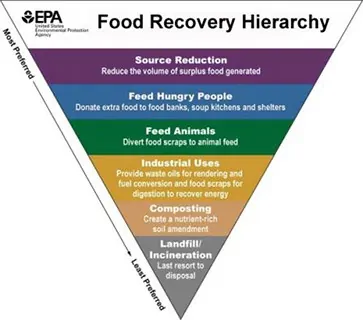
The SWANA report focuses on the effects of food recovery at the two lowest tiers of the hierarchy – composting and landfilling/incineration. The report concludes that food waste diverted from landfill operations has the potential to be processed at composting facilities. Then, going on to say that anaerobic digestion (AD) and co-digestion at wastewater treatment facilities are also likely destinations for diverted food waste.
Jeremy O’Brien, Director of the Applied Research Foundation, noted:
The food recovery hierarchy does not apply universally; an analysis of greenhouse gas impacts based on local data and conditions is needed to identify the best food scraps management options for a specific community.
The report encourages solid waste managers to perform a life cycle analysis of economic and environmental costs and benefits based on local needs, system capabilities, and data to identify the most effective ways to manage food waste at the local level.
SCS Engineers and SWANA are both long-time advocates for local decision-making in establishing programs to collect and manage municipal solid waste.
Related articles:
Operational expenses such as replacing collection vehicles, considering and implementing recycling programs, and the impact of stricter environmental regulatory programs can all affect collection fees and the quality of service. Strategic business planning solves the ongoing process whereby an organization determines where it is going… plus how it will get there, and what tools and resources it will use.
The City of Killeen recently worked with SCS Engineers to create a 20-year master plan with modeling capabilities to determine the optimum scenarios that benefit the surrounding communities and one that helps manage environmental safety and the outlay of capital before the expense of planning, designing, and building begins. Population projections, demographics, cost and historical data, among other resources, make up the information that is then organized and analyzed to prepare projections based on changing scenarios over a period of years. This type of economic study enables the planning team on any proposed project to provide a “what if” analysis for the decision-makers with the potential impact a proposal may have on customer rates and fees.
The collaborative effort between the City and SCS has culminated in a long-term financial roadmap and planning tool, which evaluates the impact of operational expenses and provides a basis for planning capital expenditures. The plan is already in use by the City’s decision-makers to determine the efficiency of investing in equipment and a Material Recovery Facility (MRF) as part of a waste management plan. Key outputs of this study included the justification for the City’s acquiring new collection equipment and further assessment of the feasibility of implementing single-stream recycling.
This type of business analysis requires technical expertise in the many aspects of waste management. You’ve got to dig deep into the conditions that present a financial, environmental, or quality challenge to managing wastes in order to deliver a system that is serviceable for decision-makers to use for many years.
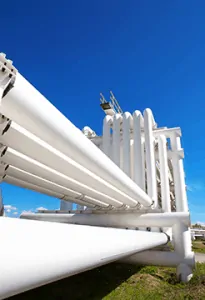
Long story short, an escapee from San Quentin and any uncontrolled methane air molecule may be more similar than we may presume. In fact, a common LDAR practice is to use an infrared imaging camera; similar to the camera often used in search of fugitive criminals.
On a serious note, fugitive emissions are something that both industry and regulators have been focused on for decades, and the past and present efforts made to limit them are no less than remarkable.
Specific to Onshore Oil and Gas Exploration & Production, the Federal Regulations applicable to fugitive emissions are fairly young. Finalized in 2012, NSPS OOOO is no longer a toddler and is in the middle of growing into NSPS OOOOa (Public Comment Deadline March 11, 2016). On a national scale, NSPS OOOOa will expand fugitive emission monitoring and control requirements (VOC’s and methane) to several facility types associated with the industry and is expected to be finalized before the close of 2016.
In California, fugitive emissions from Onshore Oil and Gas Exploration & Production have been regulated for a long time. In fact, the O&G industry in Santa Barbara County has dealt with fugitive emission requirements since 1979. Since then SCS Engineers has been assisting with fugitive emission monitoring for our valued clients. Today, SCS Engineers provides the Oil and Gas Exploration and Production industry with efficient and effective LDAR services.
So fear not, SCS Engineers is ready to supply the knowledge and skill set you need to stay compliant, maintain your operations, and respect your bottom line. Remember, unless the doors are closed, pumps are turned off, and equipment is flushed and plugged; fugitive emissions requirements and LDAR will likely still apply.
Applicability: Determining Federal vs. State oversight is the first step. Non-Major Source Oil and Gas Production facilities are either subject to NSPS OOOO (soon to be OOOOa) or a related State specific rule (i.e. Colorado Regulation 7). Once oversight is determined, then there may still be exemptions for your facility (i.e. facility constructed before August 23, 2011). And finally, once regulatory oversight is confirmed and you determine that LDAR is required for your facility, then the last step is to figure out which equipment is applicable (i.e. VOC content > 10% by weight). Basically, an applicability determination can be daunting.
Equipment: EPA’s Method 21 is historically and currently referenced in all LDAR regulations. Method 21 requires an instrument such as the Flame Ionization Detector (FID) or Photo Ionization Detector (PID). More recently the Optical Gas Imaging (OGI) Camera has been included in LDAR regulations and utilized in LDAR programs. Presently, there are several instrument technologies that exist and are in the works, but not yet mainstream in Oil and Gas sector. Ultimately, if you were to find yourself conducting LDAR monitoring at your oil and gas facility tomorrow per an established regulation, you would most likely need to use an FID or OGI.
Recordkeeping: Personally, I like the simplicity of using paper forms for field notes; however, the old-fashioned way comes with risk. The up-front and ongoing data involved with an LDAR program is too much for maintaining a paper to computer process, regardless of how organized you think you are. Therefore, a computer database platform is recommended and necessary for managing your LDAR recordkeeping. Beyond just recordkeeping, a database platform can organize schedules, alerts, generate reports, extract trends, and many other applications to help keep your LDAR program compliant. One such platform worth considering is SCSeTools™. This cloud-based software can provide the database capabilities used on the desktop, but almost more importantly, provides mobile data input capabilities with the SCS MobileTools™ application fit for Android and IOS systems. Keep the fugitives from escaping, and document containment for the authorities!
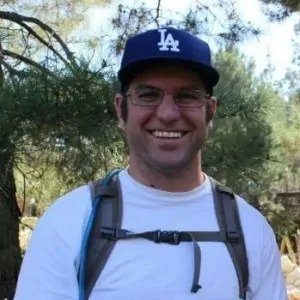
Whether you want to discuss LDAR or Dodger baseball, don’t hesitate to contact me, or SCS Engineers.
Resources:
Learn more on the SCS service pages and read SCS project case studies from across the nation to help fine tune your program.
Outside links to the EPA proposed rulemaking website:
This workshop was insightful, tightly constructed, and – most impressive – able to deliver high quality information that businesses can use immediately. I have been to hundreds of business workshops where companies feel drowned in the amount of expert information coming at them. Not so at this concise, one-hour workshop where businesses clearly understood the next steps they should take and where they can find resources to help them proceed.
Jo Marie Diamond, President and CEO, East County Economic Development Authority after attending the SCS seminar in San Diego, CA. on March 1, 2016.
SCS Engineers staff professionals are available to answer questions about compliance and the proposed fee schedule changes for attendees and any business unsure about the storm water permit. We can help clarify questions such as:
See the slide presentation here if you have not attended the seminars.
If you have questions about how the storm water permit could impact your business, or would like to know more about the permit fees, please contact Cory Jones, your nearest SCS office in California, or .
Cory Jones, P.E., ToR, QSIP, is a stormwater program manager at SCS Engineers. Jones manages complex projects for private and public clients that include site/civil, water/wastewater and stormwater engineering. He has completed a wide variety of special studies in storm water management and National Pollutant Discharge Elimination System (NPDES) compliance for federal, state and municipal public agencies.
Thirty-four senators and 171 representatives argue in a brief filed February 23, that the EPA overstepped its boundaries in creating the carbon-cutting Clean Power Plan. In short, the brief states that they feel that Congress never gave the EPA a clear statutory directive or authority to transform the nation’s electricity sector. The brief points out that the EPA seeks to make “decisions of vast economic and political significance” under a “long-extant statute,” and in doing so must point to a “clear statement from Congress.”
Yesterday’s brief comes just two weeks after the U.S. Supreme Court ruled the EPA cannot begin enforcing the rule until legal challenges filed by 25 states and four state agencies are resolved.
The D.C. Circuit Court of Appeals will hear oral arguments on the merits of the states’ case on June 2.
With the brief it is clear that the Clean Power Plan is not only facing legal challenges but also political ones. It may be left for the next Administration to pick up this pieces and decide the fate of the Plan.
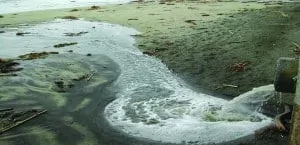
Current rates are flat fees where permittees pay approximately $1,800 for a permit whether you have one acre of industrial operations or 100. The proposed rates would consider criteria such as total acres of activity exposed to storm water, permeability, and percent of property used for industrial operations. If you would like to comment directly to the Water Board, email your suggestions to
A panel of experts will convene on Tuesday, March 1, 2016, from 7:30 a.m. to 9:15 a.m. at the Civic Building #8P-Presentation Hall to provide businesses with information necessary to determine if they need to comply or are exempt. The building is located at 10601 Magnolia Avenue in Santee, CA.
Register with Amy Snyder at 1-619-464-1200 or via email at
The session is free and will cover these topics:
Panel of Experts:
Bill Fischbeck, Esq., and the moderator is an attorney in East San Diego County since 1976, Bill’s practice is concentrated in real estate, including transactions and dispute analysis as well as land use matters before public agencies throughout the County.
Cory Jones, P.E., ToR, is a storm water program manager at SCS Engineers. Jones manages complex projects for private and public clients that include site/civil, water/wastewater and storm water engineering. He has completed a wide variety of special studies in storm water management and National Pollutant Discharge Elimination System (NPDES) compliance for federal, state and municipal public agencies.
An Environmental Attorney will also join the panel. The educational session is sponsored by Commercial Properties Group and the San Diego East County Economic Development Council.
Link to more information about storm water management
Technical bulletins provide salient information in a condensed format. These summaries are useful to understand and start to plan for potential impacts to your business. Both bulletins posted today include deadlines and additional resources with contact information to help answer your questions. The two bulletins posted today are as follows:
Clicking the title of each Technical Bulletin will take you to the full text. Each Bulletin may be shared, emailed, or printed.
About Pat Sullivan:
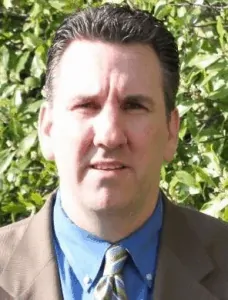
Pat Sullivan, BCES, CPP, REPA, is a Senior Vice President of SCS Engineers and our National Expert on the Landfill Clean Air Act and the New Source Performance Standard (NSPS). Mr. Sullivan has over 25 years of environmental engineering experience, specializing in solid and hazardous waste-related issues.
Click on Pat’s name to see his full qualifications and experience.
The U.S. Environmental Protection Agency (EPA) issued a final rule on September 29, 2015, seeking to further control emissions of hazardous air pollutants (HAPs) and volatile organic compounds (VOCs) from petroleum refineries.
This action finalizes the residual risk and technology review conducted for the petroleum refinery source category regulated under the National Emission Standards for Hazardous Air Pollutants (NESHAP; 40 CFR Part 63, Subpart UUU), including the refinery Maximum Achievable Control Technology Standard (MACT) 1 and Refinery MACT 2.
Click here to read the Technical Bulletin
Denver, PA. – SCS Engineers is opening a new office in Denver, Pennsylvania. The professional engineering staff currently serving clients in Reading will be joined by additional environmental consulting staff moving to the larger office space on November 1, 2015. The new office is located at:
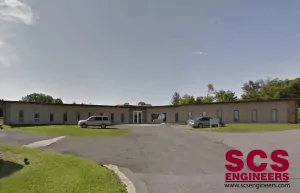
SCS Engineers
22 Denver Road, Suite E
Denver, PA 17517
Tel: +1-610-382-3050
Denise Wessels, P.E., and SCS Project Manager stated, “We are strengthening our commitment to the Commonwealth, and the new location enables us to broaden our environmental services in the region, including SCSeTools®.”
SCS provides quality environmental consulting and construction services to municipal and private sector clients, and has recently expanded SCSeTools®, a platform for organizing big data collected at landfills. The tools collect data, and then organize the data into analyses, graphs, and maps that allow landfill owners and operators to predict, assess, and plan the operation and maintenance of their facilities. This insight helps with decision-making for operational excellence and helps to improve the bottom line.